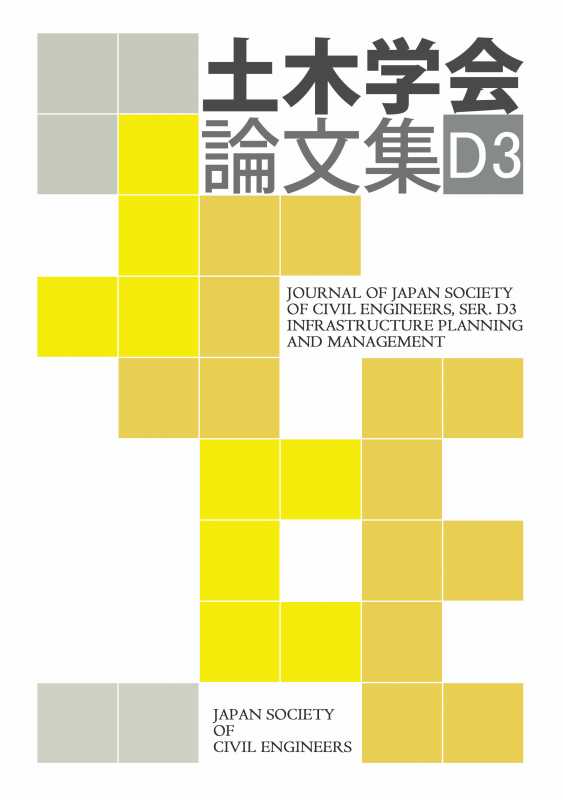All issues

Volume 73, Issue 2
Displaying 1-2 of 2 articles from this issue
- |<
- <
- 1
- >
- >|
Paper (In Japanese)
-
Tsuyoshi HARADA, Tsuyoshi ONO, Fumitaka KURAUCHI, Akiyoshi TAKAGI2017Volume 73Issue 2 Pages 109-123
Published: 2017
Released on J-STAGE: April 20, 2017
JOURNAL FREE ACCESSIn response with East Japan Great Earthquake, the Japanese Ministry of Land, Infrastructure, Transport and Tourism has announced the evaluation method of the function of road in emergent situation. In the announced method however the benefit of such function is not evaluated by the monetary term and the method is therefore not consistent with the conventional benefit evaluation method. Based on the above background, we propose a benefit evaluation method of disaster prevention capability of road network consistent with the conventional benefit evaluation method. In concrete, we define the benefit of disaster prevention capability of the road as a sum of reduction of economic loss by detouring and losing opportunity, and reduction of anxiety of being disconnected for local citizen. The proposed method is applied to the road network in Hida area of Gifu Prefecture, and the benefit of enhancing connectivity by new road construction is quantified by the monetary term. We found that there are effective roads and low effective roads under disaster.View full abstractDownload PDF (1142K) -
Kazuhiro AMANO, Munehiro MAEDA, Yasuhiro NAKAMURA, Yuichi SEI, Akihiko ...2017Volume 73Issue 2 Pages 124-134
Published: 2017
Released on J-STAGE: June 20, 2017
JOURNAL FREE ACCESSIn hilly and mountainous areas, it is available to construct roads of 1.5 lanes which are flexible combinations of single-lane, 2-lane and local road improvements in recent years. In construction works, 1.5 lanes are effective for temporary traffic of large-size vehicles. However, if traffic is heavy, it is complicated to decide appropriate passing places with using traffic simulations repeatedly. Therefore, we developed a new evaluation method for passing and no passing sections, and compared it to the results of a traffic simulator. The mean absolute errors of both results are 4.8 seconds for average waiting time and 3.3m for average passing space, which are very small values. To combine the method with optimization techniques, it will be possible to design for optimum arrangement of passing sections and effective maintenance plans.View full abstractDownload PDF (590K)
- |<
- <
- 1
- >
- >|